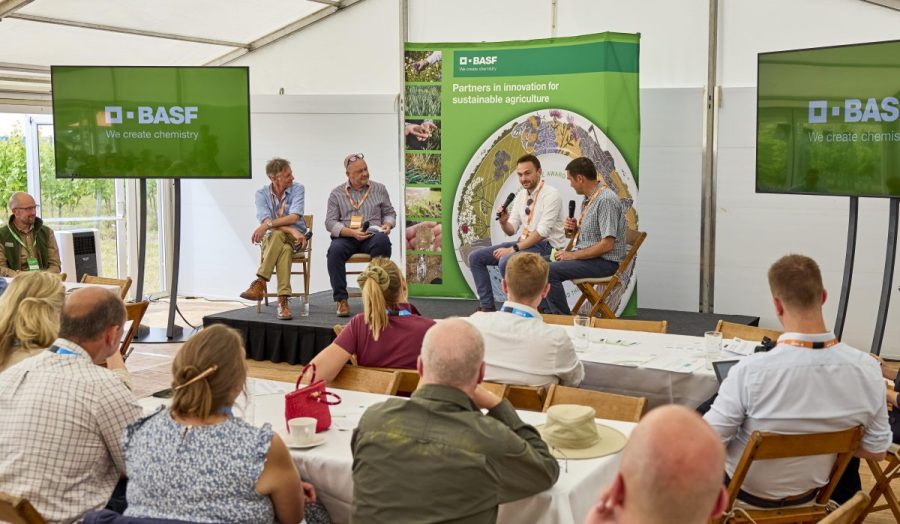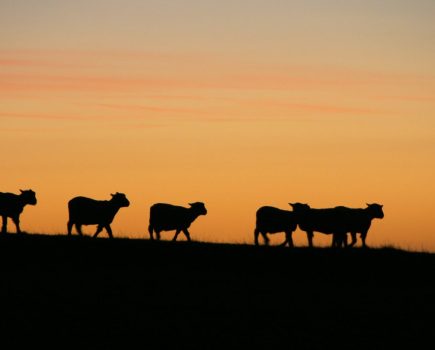The role of innovation and technology and how it plays into delivering sustainable agriculture, was the theme of a panel discussion at a recent industry event hosted by BASF. CPM joined attendees to hear the perspectives.
“Innovation is a lot broader than the latest R&D or digital tools – it’s related to business decisions and problem solving.” CHRIS HARTFIELD
By Janine Adamson
Innovation – while often associated with emerging technologies and scientific advancement, is in fact an everyday thing for UK growers, argued the NFU’s Chris Hartfield, during a panel discussion at BASF’s recent sustainability day.
“Growers are always refining practices, troubleshooting challenges and testing new ideas. So innovation is a lot broader than the latest R&D or digital tools – it’s related to business decisions and problem solving, and doing that in a way that makes a business forward-thinking, more resilient and improving its prospects for the future,” he explained.
Furthermore, Chris shared that he believes most farmers are inherently innovative, although when that’s defined in terms of adoption, there are differences across the industry. “There are those who are early adopters, but then there’s the majority in the mid category, where individuals are open to new technology but have to see it convincingly proven before embracing it into their business.
“Understanding the balance between opportunity and risk is important, to know what a technology may deliver. The opportunity for us, is how we help to derisk that process of becoming more innovative and adopting new technology,” he continued.
Northamptonshire grower, Andrew Pitts, added that he perceives himself as an early adopter. “An example of an innovation we’ve recently tried is a new fertiliser application technology, which has resulted in applying 35kgN/ha less in a first wheat situation – equating to a £50/ha saving.
“It’ll be interesting to see how this translates when we have the yield data, but, innovation is what drives us forward and keeps us interested,” he said.
Moving the conversation forward, BASF’s public and governmental affairs manager, Jon Williams, queried public perception of technologies such as gene editing, and where confidence levels may lie.
In response, AgriSound’s Casey Woodward said he believes it’s a volatile post-Covid-19, demonstrated by a polarised public reaction to the introduction of innovative vaccines.
“Where we are in food production is very similar – there’s a pull toward regenerative, more natural production systems with low inputs; while others are going the opposite way with vertical farms and high-tech based approaches.
“Consequently, I think we’re seeing a market split. From the work we do with pollinator sensors, we see a strong pull for nature, but if we were seen to be disrupting pollinators and interrupting their natural cycles, I believe we’d get a strong push back. Consumers care about these things, but whether they’re willing to pay for it yet is the unknown.”
Chris pointed out that although public perception of agriculture is critically important, it remains a challenging area. “There’s a wider wariness regarding science generally, which is a problem that has to be tackled.
“It’s a complex picture – post-war we saw growing levels of food security and highly sophisticated supply chains which were driven by supermarkets. But during the last decade or more, there’s been a growing public concern regarding ‘big business’ involvement in science and how that sets the agenda.
“There’s now an appetite for natural, organic, home-grown and locally sourced; it’s a task to juggle that.”
According to Chris, something the industry is guilty of, is downplaying how societal benefits such as affordability, seasonality and plentiful supply, is delivered through science and technology, and the adoption of that by farmers and growers.
“We’ve backed off talking about it, so there’s a public perception that the industry we work in is low-tech and low skilled – this couldn’t be further from the truth, so we have a lot of ground to make up.
“We have to be open and transparent about how food is produced because we have nothing to hide. We work to some of the highest standards and strictest regulations in the world, there’s nothing to shy away from.”
In terms of whether the adoption of technology should be incentivised, Casey said it depends on where the benefits lie. “If these are spread across the value chain, or deliver societal benefits, then there’s clearly a role for subsidies in that process.
“Being involved in nature enhancement, trying to tie that back to a strong commercial ROI can be challenging, so the role of subsidies to lower the barrier to entry and encourage people to try such innovations, is critical.
“We definitely have to tell a better story to the public about why these technologies are important and how they’re benefitting UK PLC.”
Considering the use of data, Andrew shared that it can be overwhelming. “You have to be able to manage it so it doesn’t manage you. A good example is yield monitoring – we’ve used that for around 20 years and while it informed a lot of decisions when we first had it, it has less of an impact now.
“If you have something user-friendly which is connected to all machines and is easy to use – we use Omnia – you have something that will work. Technology which is up-to-date and enables you to access information quick and easy is brilliant.
“If it holds you back, it’s like a spanner in your toolbox, you know it’s there but it isn’t always used. It has to work and pay for itself,” he said.
In response, Chris highlighted that one challenge is the large number of systems and tools available which are collecting data. “That complexity causes too much choice, plus in working for the NFU, by and large at the moment, that data is inaccessible to me.
“Within systems such as Omnia there thousands of IPM plans. If I wanted to tell the government that this industry is responsible in the way it manages pests and diseases on farm, and the progress its making, that information is currently inaccessible to me.
“So I think it’s not about data, it’s about making it available so we can use it in a way that’s delivering for us all – for individuals on farm, and for us more widely, to cut through some of that complexity. At the moment it’s a minefield and many growers don’t know where to start.”
Casey added that context is key. “It doesn’t matter what you’re providing, if you don’t have the richer data around it, and therefore its context, it’s limited in its value. The more we can do to break down the barriers towards having that contextual data available, the better.”
Advancing the conversation, Jon queried whether the balance is right between affordability, scalability and the benefits offered to growers, and how that can be achieved in the innovation space.
In response, Andrew pointed out that farmers always look over the hedge at others, to observe the mistakes and successes. “Classically, we bought a direct drill in 2018, having had contractors do so for a few years before hand. Three years later we have five neighbours who are direct drilling – not the whole farm, neither are we – just what’s appropriate on a per-field basis.
“Farmers learn from each other but we require bigger businesses to pay for some of the trial work required. Most people trust a farmer and that’s the way we learn. The loss of demonstration farms has been detrimental to the uptake of new technology – there’s no doubt about that.”
This article was taken from the latest issue of CPM. Read the article in full here.
For more articles like this, subscribe here.
Sign up for Crop Production Magazine’s FREE e-newsletter here.




